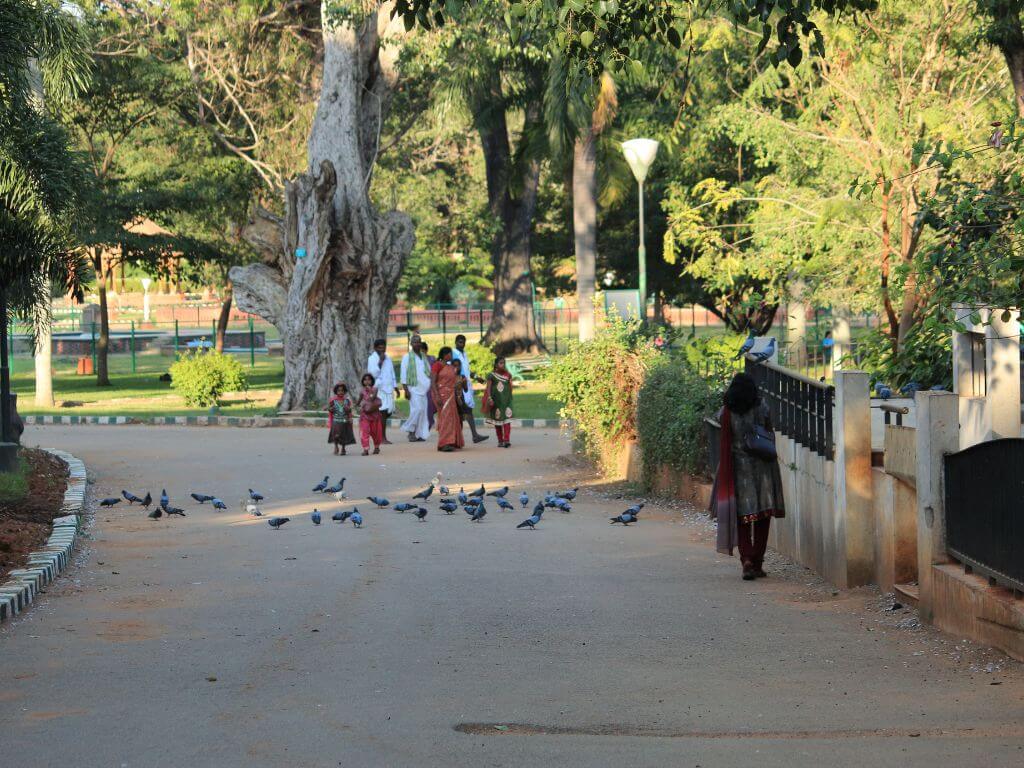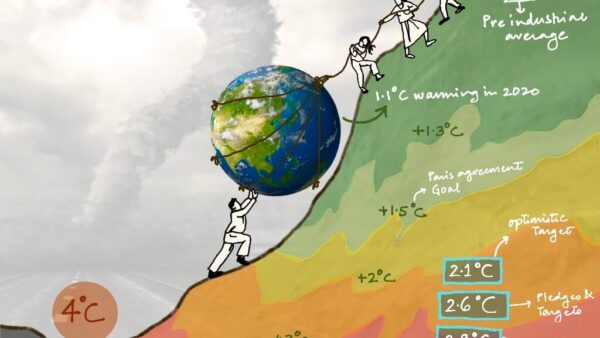In concrete-dominated cityscapes, trees offer a pause. Their presence often goes unnoticed but their absence is striking, their uses are many. Cities may have tree authorities but what is really needed is a tree policy for a city prepared with experts and citizens in neighbourhoods, says Dr Harini Nagendra, professor of ecology at Azim Premji University, and distinguished writer on nature and sustainability who co-authored Cities and Canopies: Trees in Indian Cities. The acclaimed book featured on the 2021 Green Literature Festival’s honour list.
“Research has shown that trees reduce pollutants, buffer micro temperature fluctuations and reduce the Urban Heat Island effect by lowering surface asphalt temperatures,” she says in this interview to Question of Cities about the need for trees amidst the concrete in cities, the nostalgia of older city-dwellers about trees, and the need for the younger generation to develop connections with them.
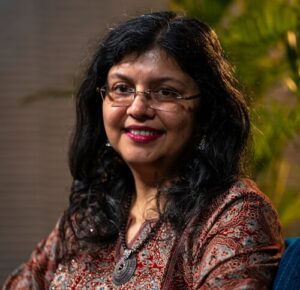
Can you share some of your fondest memories of trees and how this is reflected in your books?
I grew up in Delhi and Bengaluru where I used to go to parks for walks with my parents. We just walked and walked while looking at trees, stopping to see deer or pigeons in Lalbagh. My mother had her B.Sc in Botany in the 1960s, unusual for her generation, and she had that love for plants. It meant a different kind of walk, barely 50 metres in 10 minutes, stopping to tell plants apart. These are my subliminal childhood memories. My dad was a bureaucrat, we lived in government quarters in different cities which meant gardens and trees, looking at a fig tree, monkeys or birds on it for hours. I think all of these childhood memories came together later when I did my PhD in Microbiology, Chemistry and Zoology.
A book like Cities and Canopies – Trees in Indian Cities really grew from my first book Nature in the City which was on Bengaluru’s ecology. I didn’t write it as an academic book, but many who read the book said that though they were interested in nature, they found it a little heavy. Seema (Mundoli, co-author) and I discussed a lot. My research on Bengaluru’s urban ecology, which I began in 2006, was ‘to preach outside the choir’, so to speak. I had in mind a man who, during a Rotary Club’s seed ball initiative held in a 5-star hotel, said sarcastically in Kannada: “Who doesn’t like trees? All the great people here have been talking for the past hour that trees are important. I agree but I have a job in Vidhan Soudha where I have to clock in at 9am. My bus gets stuck in traffic, your trees are obstructing my right to reach work.”
It’s true. Most people like trees but think like this man – can we get rid of the trees in the city to keep traffic moving smoothly, and visit forests on weekends to get our fix of trees? Seema and I have collaborated since 2013, and have a common interest in communicating our research to circles beyond academia.
What would you say is the relationship, or different facets of it, between trees and cities?
I think trees remind us that, at the fundamental level, we share space with other kinds of beings. How we share space in cities where everything is a struggle for the majority of residents who are always running, trying to find their bit of space in a very cramped city, is the issue. Places of nature give us the breathing space to reconnect to the natural world around us, to realise that it’s not only human beings who live on the planet. Nature helps to de-stress, connect to our spiritual side, respect the web of life. All this is not possible if you only have malls, parking lots, offices, schools and colleges, the grey and the concrete.
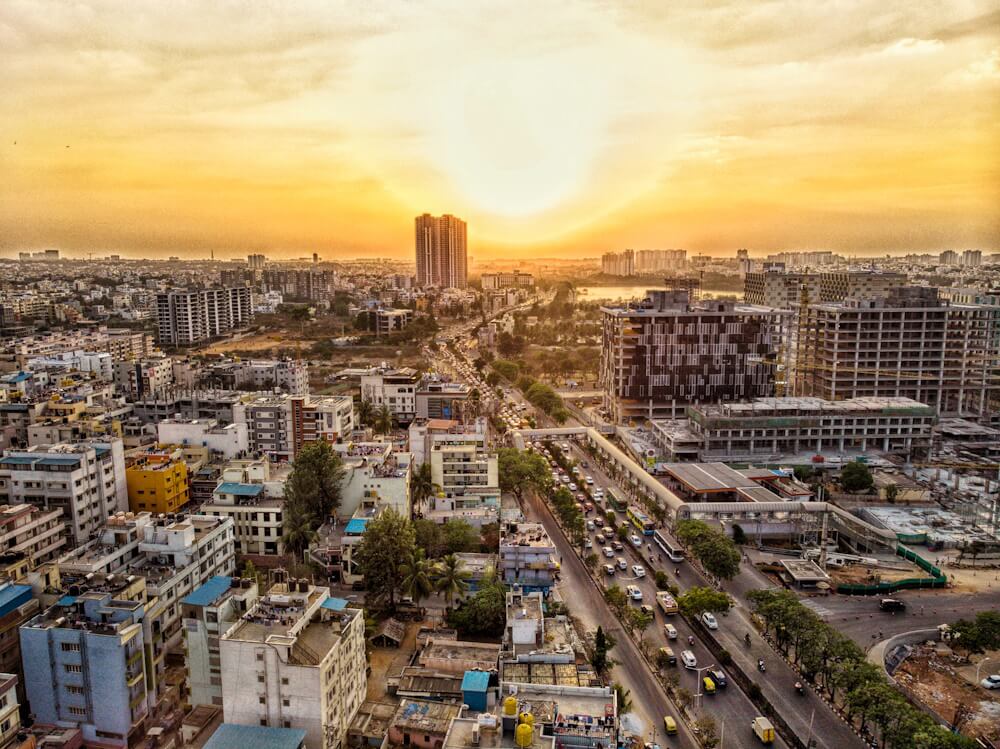
Photo: KshitizBathwal/Creative Commons
What did you intend as the takeaways from Cities and Canopies?
People carry nostalgia, the memory of their connection to nature. This is especially so for older people who have forgotten about their early relationship with trees. One of the most gratifying things for Seema and me has been, after our talk, to hear someone say “Oh, I had this favourite tree in my grandmother’s house” or “I had a name for this tree” and similar memories. The book rekindled their memories, then they went out tree-spotting in their neighbourhoods.
Secondly, a large number of young people and school-going children have read it. They are young enough to still have their connection to trees. A girl in Class 8 said to me “in my lifetime, I have seen this road change, as trees disappeared from the road”. I cannot forget her. We should not have a world where a 13-year-old is saying this, it’s heartbreaking.
Thirdly, people found the science fascinating. We wanted to bring in things like exotic and indigenous varieties, what defines each, how we take cultural prejudices of immigrants and non-immigrants into scientific research on trees, and what is still unknown. Many people have seen trees but not paid enough attention. They told us: Yes, we have seen grazers, fishers, people say they are an eyesore and need to be removed, but now we want to challenge these notions. So, there are these little mindshifts which we really appreciate.
Finally, there is the mental health aspect. It is interspersed but not a big element in the book. The Covid-19 pandemic was right after the book and we realised that, after this, many people appreciate the importance of trees for mental health.
Why and how are trees important, or crucial, to urban ecology and cities?
Trees are important for the daily well-being of cities but cities are built on economic-cost analysis. With global environmental change, there is an increase in pollution, physical and mental health issues, societal fragmentation, crime and climate change. Trees are important for the resilience of a city and resilience of people who live in the city – I am separating the two though they are connected.
If we didn’t have trees, we would have a lot more air pollution. Our research and so much other research shows that trees reduce sulphur dioxide, nitrous oxides and carbon monoxide, and buffer micro-temperature fluctuations. The Urban Heat Island effect reduces, surface asphalt temperatures decrease, and road temperatures become bearable. Similarly with flooding – if there are no wetlands, and all parks and green spaces are concretised, there would be more flash floods because there is no place for the water to percolate into the earth. This is what I mean by the resilience of the city as a whole.
Who in the city is getting affected? It is the poorest of the poor. Heatwaves and floods impact all people, but the wealthy can live in a hotel during a flood. What can you do if you are poor and your shack gets flooded? Even in the heart of our megacities, people – or largely women – forage for bits of firewood, food, medicines, and other things. In Bengaluru, there is the pongamia seed used for lighting lamps, which many women forage and sell for a little extra income. So, trees are central to our lives in cities.
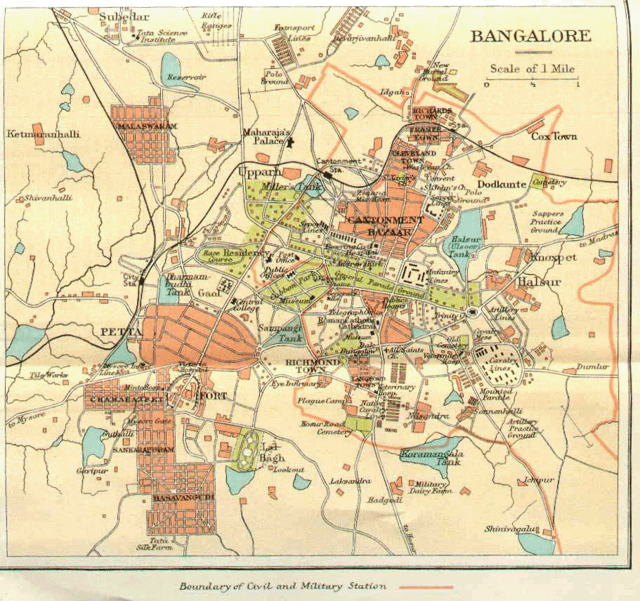
Photo: Creative Commons
Indeed, but trees are seen as unnecessary or impediments in urban planning. What needs to be done to set this right?
We focus a lot on money in cities. Of course, given it is a political economy, it’s always more profitable for officers to approve new road projects than to protect status quo and preserve trees. There is money in rejuvenating a lake or river front, but there is no money in saving trees. They work in a project-oriented mode. “I protected something” is not necessarily useful to officers keen to establish a career and initiate ambitious projects.
Secondly, the value of a city is as a place of commerce, not as a place of well-being. The part that gets the most traction, in the media or residents’ associations or the government, is the impact of trees on pollution because it’s related to public health. That’s why I have been saying that it’s important to have environmental psychologists and health experts in planning. We need to mainstream this way of thinking into mass architectural design and teaching.
Birds and trees are deeply interconnected, as you have shown. You spoke of hornbills returning to their habitats in Bengaluru’s “protected sacred groves and restored lakes”. How can this be adapted in other cities?
We have to be creative with city spaces, finding ways to insert trees in. There’s a lot of scope in smaller cities and peri-urban areas, but it’s more difficult in older cities. What we saw is that if a lake is restored, species like pelicans and painted storks come back, which are species not seen in Bengaluru in years. Our research using eBird data has shown that migratory bird species continue to be impacted but resident bird species recover quickly once you restore a lake. Similarly, ground-nesting birds are more impacted, but tree-nesting birds recover, perhaps protected by sacred groves or trees.
My economist colleagues at Azim Premji University have proposed a national urban employment guarantee scheme largely focused on urban commons and urban nature. It could have a positive economic effect on cities like the rural employment guarantee scheme had in villages, providing work opportunities while restoring lakes and sacred trees. I always think of Kathalekan in Uttara Kannada district, Karnataka – kathale means dark and kan means forest – which is so dense that you can’t see the light but a new species of frog was discovered. Who knows what other species are waiting to be discovered amidst the trees.
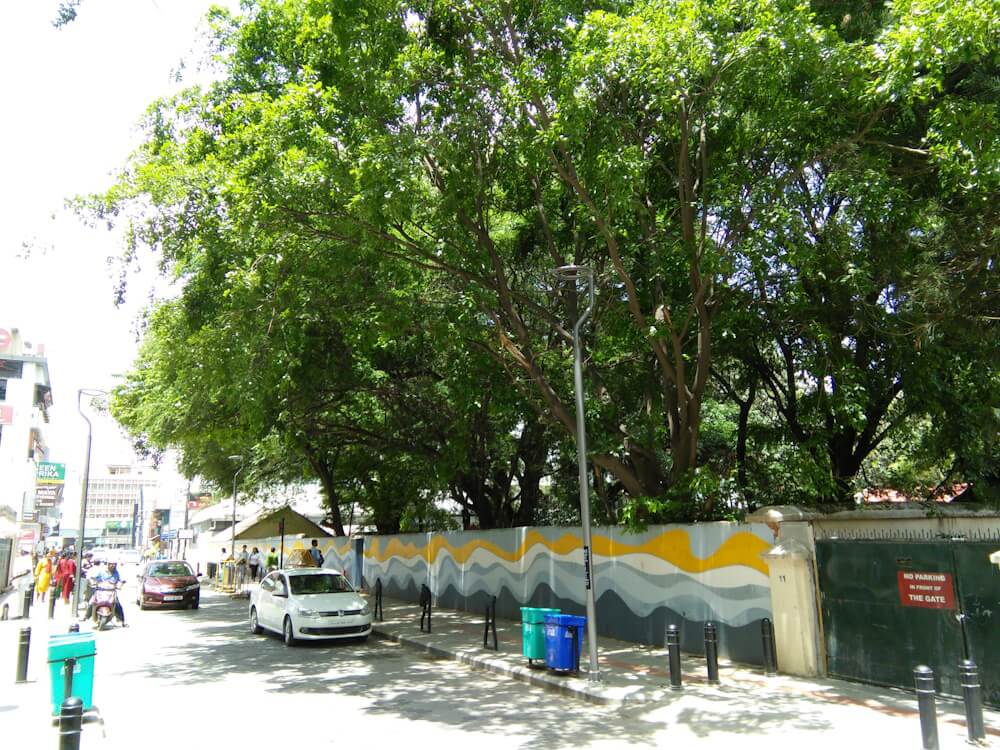
Photo: T. R. Shankar Raman/ Creative Commons
The relationship that you draw between decorative palms, urbanisation and IT parks from California to Bengaluru is interesting. It’s seen in other ‘IT cities’ too. How can this be countered?
I think positive examples help. Some companies are open to this, others are not. Many gated communities in Bengaluru that planted royal palms because of the California-IT influence realised that once the palms grow for 20-plus years they become unstable, are not meant for our environments, and chopped them down.
Secondly, the more progressive IT parks realise they can do something different and it becomes an example. WIPRO, for instance, started with the idea of planting trees to offset carbon emissions but, along the way, they were open to working towards water sustainability and biodiversity too. After restoring part of their campus, it attracts so many butterflies, and biodiversity that comes to a little artificial wetland. This has become a showcase where corporate groups from across India are brought. This is what we need.
Would you say that in our cities, it is primarily people who have been saving or protecting trees while governments treat trees as dispensable in the pursuit of development?
Yes, people have been at the forefront of this, often communities start social movements and inspire each other. People know like-minded people across cities, share data, exchange legal documents. But such people are a fraction of a city’s population. I wish many more people would get involved because governments really respond to that. The moment you have masses out on the street, governments change tune, they do respond.
The administration sees trees as dispensable because it still functions in the older world where it believes it has urgent things to fix, such as traffic for which wide roads are needed. But it’s an outdated concept. The world is changing around us, environmental issues are more crucial. They are not seeing that but they will if more people demonstrate that they care about the environment as much as they do about, say, traffic.
There is a class factor; many people might be interested but cannot spare time to save trees because they are busy making a living.
I agree, there’s a niche of people in such movements and they are influential. But let me put it this way — there are movements of all kinds, the ones that gain traction or media attention are the ones in which influential people are involved. It’s not that the poor are not engaging in these social movements, nobody is listening to them.
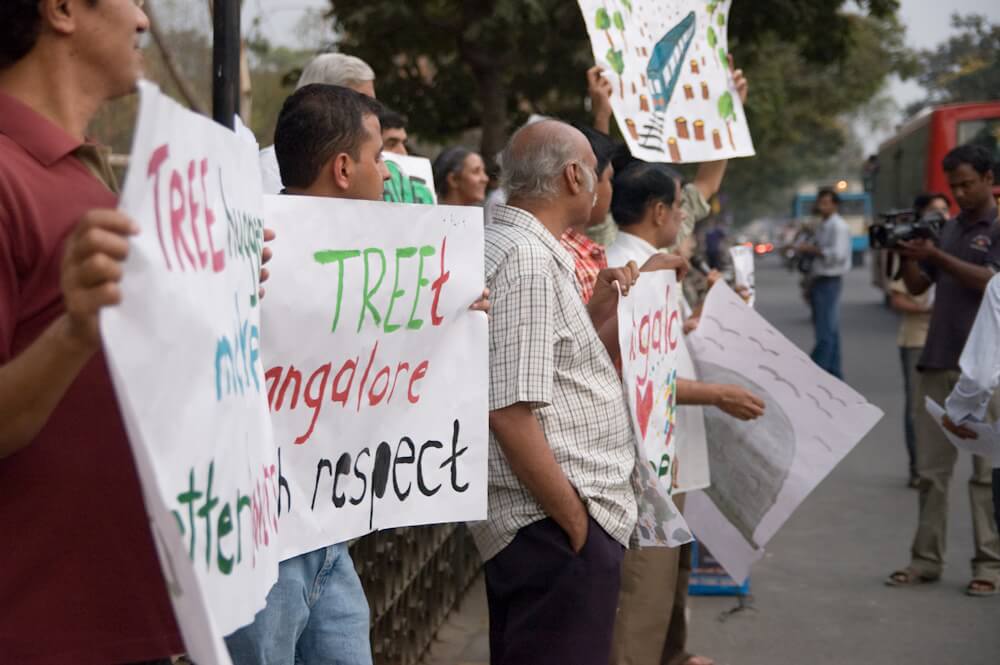
Photo: Wikimedia Commons
What is your assessment of how the judiciary has been with respect to protecting trees and ecology in cities?
It’s mixed and varied. There could have been policy changes for protecting nature, but I would say that if there are programmes and policies for trees, it is because of an activist judiciary. For example, in Bengaluru, when road widening was taken up on Jaymahal and Bellary Road near the Bangalore Palace, we did an assessment of the environmental damage of tree-felling and wrote in Bangalore Mirror. The court took suo moto cognisance of it and directed action. The trees were saved for a few years though they were eventually cut down. An influential PIL by the Environmental Support Group helped to save many lakes.
Tree planting in cities cannot be a one-size-fits-all approach. What would you recommend for the authorities and people?
At the local level, there are versions of tree authorities but what our cities need are tree policies. Tree authorities lack the mandate, financial power, power over other departments; they can only recommend. Even if tree authorities were functional, we don’t have tree policies in cities, which describe for instance, a suggested list of trees that people can plant.
This is easily possible but each city needs its own list. Bring together tree experts, architects, non-governmental organisations, and citizens together in neighbourhood meetings to find out why a neighbourhood needs trees. Is it for food, climate, health, protection against sea level rise or flooding, mental health relief, mere beauty? Among the common questions we get is “I live in XYZ area, I want to know what to plant”. So, Seema and I have worked on a tree planting guide for Bengaluru, which will be officially released soon, but for legitimacy and scale, city municipalities should take on initiatives of this kind.
Cover photo: Lalbagh Botanical Garden in Bengaluru by Manojk/Creative Commons

